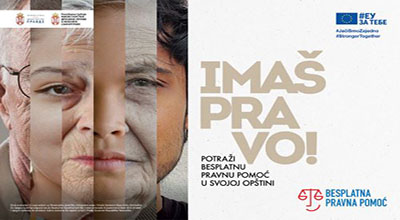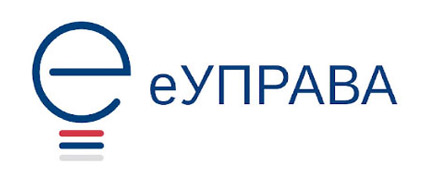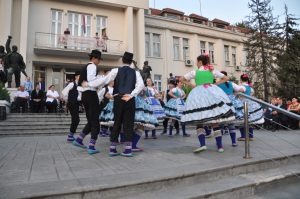 Богат културни живот одвија се како у градском језгру, тако и у приградским насељима у склопу домова културе. Желећи да житељима Вождовца приближи културу народа и земаља, Општина је организовала репрезентативне манифестације на којима су амбасадори земаља – гостију представили и промовисали културу, традицију и обичаје својих земаља кроз разноврсне програме. Ову јединствену замисао општина Вождовац организовала је афирмишући их кроз „Дане културе блиских земаља“, па су тако уприличени Дани Руске културе на Вождовцу, Дани Италије, Румуније, Израела, Словачке, Бугарске, Индије, Кубе, Белорусије, Кинеске културе, Шпаније, Мађарске, Републике Српске, Чилеа и Дани Јапанске културе. Свака земља поделила је са грађанима Вождовца своје културне и историјске вредности, део свог идентитета поштујући намеру организатора да је корисно упознати и уважавати културе других народа које су приказане кроз концерте, пројекције филмова, плесне вечери, књижевне и песничке вечери, изложбе фотографија, фоклорне наступе, рукотворине народа и народности.
Богат културни живот одвија се како у градском језгру, тако и у приградским насељима у склопу домова културе. Желећи да житељима Вождовца приближи културу народа и земаља, Општина је организовала репрезентативне манифестације на којима су амбасадори земаља – гостију представили и промовисали културу, традицију и обичаје својих земаља кроз разноврсне програме. Ову јединствену замисао општина Вождовац организовала је афирмишући их кроз „Дане културе блиских земаља“, па су тако уприличени Дани Руске културе на Вождовцу, Дани Италије, Румуније, Израела, Словачке, Бугарске, Индије, Кубе, Белорусије, Кинеске културе, Шпаније, Мађарске, Републике Српске, Чилеа и Дани Јапанске културе. Свака земља поделила је са грађанима Вождовца своје културне и историјске вредности, део свог идентитета поштујући намеру организатора да је корисно упознати и уважавати културе других народа које су приказане кроз концерте, пројекције филмова, плесне вечери, књижевне и песничке вечери, изложбе фотографија, фоклорне наступе, рукотворине народа и народности.
У серијалу „Савременици“ који је трајао неколико година, Општина је угостила најзначајније живе српске писце и песнике, који су се представили вождовачкој публици. Представили су се књижевници академик Милорад Павић, академик Светлана Велмар Јанковић, Драгослав Михајловић који је говорио о Вождовцу о коме је писао у култном роману „Када су цветале тикве“, Горан Петровић, Данило Николић, Зоран Богнар, Динко Туцаковић, Милисав Савић, Александар Гаталица, Љубица Арсић, Гроздана Олујић, Љиљана Хабјановић Ђуровић, Драгомир Брајковић, Вида Огњеновић, Драган Великић, Мирослав Јосић Вишњић, академик Владета Јеротић, Мирјана Бобић Мојсиловић, Радован Бели Марковић.
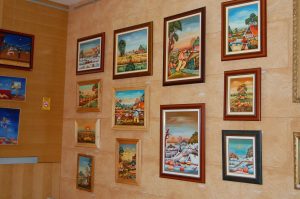 Жив дијалог са житељима оствариван је кроз трибине на актуелне теме. Више од петнаест година Општина уступа простор за одржавање духовних разговора на трибинама које организују храмови. У свечаној сали одржаване су редовне сликарске изложбе које су често имале хуманитарни карактер, тако да је део од продатих слика био уплаћиван у Хуманитарни фонд општине, за помоћ најугроженијима. Општина је оснивач Галерије „Бели анђео“, а изложбе које организује галерија се одржавају у згради општине Вождовац. И концерти на којима су учествовали познати бендови и певачи били су хуманитарног карактера, како би се помогло у акцији за лечење деце.
Жив дијалог са житељима оствариван је кроз трибине на актуелне теме. Више од петнаест година Општина уступа простор за одржавање духовних разговора на трибинама које организују храмови. У свечаној сали одржаване су редовне сликарске изложбе које су често имале хуманитарни карактер, тако да је део од продатих слика био уплаћиван у Хуманитарни фонд општине, за помоћ најугроженијима. Општина је оснивач Галерије „Бели анђео“, а изложбе које организује галерија се одржавају у згради општине Вождовац. И концерти на којима су учествовали познати бендови и певачи били су хуманитарног карактера, како би се помогло у акцији за лечење деце.
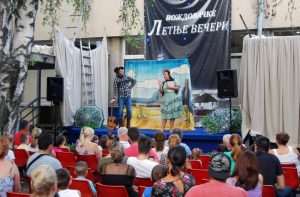 Редовне културне активности одвијају се у Установи „Вождовачки центар – Шумице“ који је мноштво програма посветио младима, а има и свој глумачки омладински „Театар 13“. У свечаној великој сали редовно се одржавају промоције књига и позоришне представе, а у холу изложбе слика, литерарна и ликовна такмичења, школе глуме, плеса, калиграфије и певања. „Вождовачке летње вечери“ су традиционална манифестација која се одржава под покровитељством Општине током летњег распуста, када се одржавају бесплатне представе за децу, концерти забавне музике, изложбе и књижевне вечери у атријуму. Биоскоп на отвореном окупио је Вождовчане који су под ведрим небом, на Душановачком платоу и платоу испред УСЦ „Вождовац“ гледали најновија остварења домаће кинематографије.
Редовне културне активности одвијају се у Установи „Вождовачки центар – Шумице“ који је мноштво програма посветио младима, а има и свој глумачки омладински „Театар 13“. У свечаној великој сали редовно се одржавају промоције књига и позоришне представе, а у холу изложбе слика, литерарна и ликовна такмичења, школе глуме, плеса, калиграфије и певања. „Вождовачке летње вечери“ су традиционална манифестација која се одржава под покровитељством Општине током летњег распуста, када се одржавају бесплатне представе за децу, концерти забавне музике, изложбе и књижевне вечери у атријуму. Биоскоп на отвореном окупио је Вождовчане који су под ведрим небом, на Душановачком платоу и платоу испред УСЦ „Вождовац“ гледали најновија остварења домаће кинематографије.
ГО Вождовац сваке године учествује у манифестацији „Дани европске баштине” у Београду који је део велике европске манифестације Савета Европе и Европске Комисије, којом се представља наслеђе као заједничка баштина европских народа, разноликост култура, традиције, обичаја. Из године у годину Општина организује у склопу ове манифестације пешачење и обилазак Авале, као и обилазак споменика Незнаном јунаку и Торња на Авали, предавање о споменику природе –„Бајфордовој шуми“, посета Музеју књиге „Адлигат“ на Бањици, обилазак рудника „Црвени брег“ на Авали, спомен куће Војводе Степе Степановића и мноштво занимљивих и атрактивних знаменитости.
Свечаном академијом у част војводе Степе Степановића, у његовој родној кући у Кумодражу обележава се годишњица рођења славног српског војводе.
Вождовац своју културу и традицију негује и чува кроз активности више културно-уметничких друштава, међу којима су најстарија „Милан Ђ. Милићевић“ из Рипња, „Степа Степановић“, као и „Радост“ и „Златно доба.



